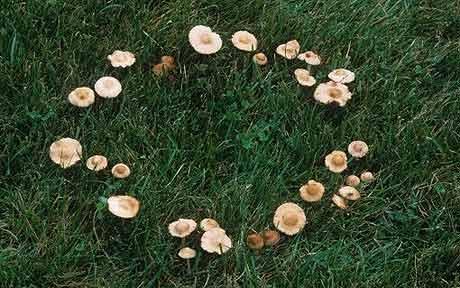Spore Dispersal:
Although Amanita muscaria is non-motile, like many other mushrooms it can have offspring growing in other places through spore dispersal. Spore disposal is the releasing of the basidiospores on the basidia underneath the cap. Once the basidiospores are released, they can travel to places through many methods. Here are some examples of how spores can be carried:
- By wind: spores are extremely small and light; therefore, spores can be carried by wind and deposited along the direction of the wind.
- Through contact:spores can be carried through contacts as organisms accidentally pick up the spores. The spores then travel with the organisms and are deposited along the way.
- Through ingestion: spores can be carried to other places as animals ingest the mushrooms and excrete them later on.
 |
| Source:en.wikipedia.org |
 |
| Source: www.arthursclipart.org |
The diagram shows that spores are dispersed by wind and other external factors.
Spreading of the Mycelium:
The other way for Amanita muscaria to be at other places is by spreading its mycelium, a net work of hyphea. The mycelium of the Amanita muscaria extends to places where more nutrients are available, and then develops into a fruiting body with the exact genetic infomation, since technically it is still a part of the first mushroom. An example of the result of the spreading of the mycelium is fairy's ring. as shown below. The spreading is the reason that mushrooms are sometime considered the largest organisms in the world, as all the mushrooms resulted from the spreading are considered as one big organism.
 |
| Source:http://www.tumblr.com/tagged/toadstool |
Great article! Big help for my living environment homework :))
ReplyDelete